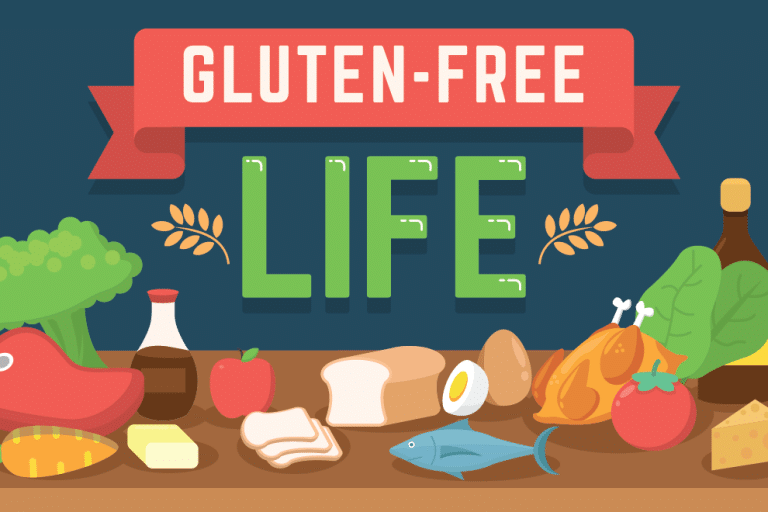46 Startling Addiction Statistics & Facts for 2024

Whether it’s dependence on nicotine, alcohol, drugs, or pills, addiction takes thousands of lives every year, and millions of people suffer from its consequences. Generally speaking, addiction is a mental disorder that compels people to use substances and engage in dangerous behaviors while being aware of their impact. The following addiction statistics affirm that if untreated, addiction can cause serious harm.
Top 10 Addiction Statistics for 2024
- 90% of smokers started smoking before they turned 18.
- 54.9% of people report they have drunk alcohol in the past month, as alcohol statistics disclose.
- Since the start of the COVID-19 pandemic, overdoses have increased by 50% in the US.
- Video game addiction statistics disclose that 12% of boys and 7% of girls are addicted to video games.
- Young people aged 18 to 25 are the most likely to have problems with prescription drug abuse.
- Smartphone addiction statistics find that 33% of teens aged 13 never turn off their phones.
- 18 million people have abused prescription drugs at least once in their lives.
- Addiction statistics for 2020 show that 0.5% of 8th graders have used heroin in their lifetime.
- 30% of marijuana users are in danger of developing a marijuana use disorder.
- 7.5 million people aged 15–34 have used cocaine at least once.
Crucial Addiction Facts and Stats
Not only does addiction destroy friendships, marriages, and careers, it also puts an individual’s health and safety at risk. Addiction is a complex disease that, more often than not, requires more than just a strong will and good intentions. Go through the section below to acquaint yourself with the latest data.
1. 40%–60% of an individual’s risk for addiction comes from genetics, according to addiction statistics.
(American Addiction Centers)
Other risk factors for developing addiction include: having abusive parents or parents who suffer from addiction, living in a dysfunctional home, being placed under significant social pressure, dealing with peers and the community’s attitudes toward addictive substances. Note that people with mental disorders and teenagers are at the highest risk of developing a substance addiction.
2. In 2018, 1.6 million people were arrested for drug-related charges, according to addiction stats.
(Drug Policy)
Of those, 1.4 million charges were for possession only. As many as 663,367 people were arrested for a marijuana law violation, and 608,775 people were charged with marijuana law violations and were arrested for possession.
3. In September 2019, 46.3% of those sentenced had drug offenses as the most serious charge.
(Drug Policy Facts)
As reported by the Bureau of Justice Statistics, on September 30th, 2019, there were 158,107 people sentenced in federal prisons. Drug statistics remark that drug offense was the most serious charge for 73,210 of them (46.3%). That includes possession, trafficking, and other drug offenses. Notably, over 99% of federal drug offenders were sent to prison for trafficking.
4. In 2015, President Obama suggested a $1.1 billion additional budget for fighting addiction.
(Drug Rehab)
Obama stated that the stigma of addiction had discouraged many Americans from receiving the help they deserve. Countless drug addiction facts point to addiction being a complex disease. Following that, we ought to find a way to help those who suffer from it without judging them.
5. In 2018, 24% of English pupils reported having taken drugs, teenage addiction statistics disclose.
(Digital NHS)
In 2018, about 24% of English pupils reported having taken drugs—the number similar to that estimated in 2016. Another finding reveals that 9% of teens aged 11 and 38% of adolescents aged 15 reported having taken drugs the same year.
6. In 2019, 138,027 US citizens reported having taken illegal drugs or marijuana.
(Drug Policy Facts)
Addiction statistics from 2019 uncover that 138,027 Americans over the age of 12 reported having used illegal drugs or marijuana in their lives. Moreover, 57,203 had done that in the past year, and 35,803—in the past month.
7. 19.7 million Americans met the criteria for a substance abuse disorder in 2017.
(American Addiction Centers)
Determining the exact number of Americans who are currently suffering from a substance abuse disorder is beyond challenging. That said, statistics indicate that the number stood at 19.7 million in 2017. Of those with a substance abuse disorder, around 74% struggled with an alcohol use disorder.
8. Smartphone addiction statistics find that 33% of teens aged 13 never turn off their phones.
(Healthline)
Teenagers overuse their smartphones more than any other age group. Notably, the earlier a teenager starts using a phone, the higher the chances of developing problematic use patterns. Astoundingly, 33% of children aged 13 never turn off their phones, phone addiction statistics reveal.
The following are the signs of having a phone addiction: reaching for your phone immediately after waking up, feeling anxious when it isn’t around, the phone interfering with your job, school, or relationships.
9. Video game addiction statistics disclose that 12% of boys and 7% of girls are addicted to video games.
(Newport Academy)
Around 12% of girls and 7% of boys have a video game addiction. Moreover, in the US, there was a 30% increase in the time spent on video games in the second quarter of 2020, based on video gaming addiction statistics.
Finally, this year’s projections point out something noteworthy. Namely, the worldwide gaming industry is forecast to reach $180 billion, with 2.5 billion people playing games.
10. One in 20 college students is a compulsive gambler, as per gambling addiction statistics.
(The Recovery Village)
One in 20 college students is a compulsive gambler. Notably, families with a member who is a compulsive gambler have increased chances of experiencing domestic violence, such as child abuse. Another finding discloses that 40% of compulsive gamblers have committed crimes related to gambling.
Nicotine and Alcohol Abuse Statistics
Nicotine and alcohol abuse are among the leading causes of preventable death in the US. The two substances are often used together—those who drink alcohol are much more likely to smoke and vice versa. Let’s find out more.
11. About 50 million Americans are addicted to a tobacco product, as per nicotine addiction statistics.
(Addiction Center)
Nicotine addiction stands for the abuse of cigarettes, cigars, chewing tobacco, snuff, and other tobacco products, and it is the most common addiction in America. Not many people find nicotine addiction dangerous since its effects are less apparent than those of other substance addictions. Be that as it may, it can affect one’s blood pressure and respiration.
12. 90% of smokers started smoking before they turned 18.
(Addiction Center)
According to tobacco addiction facts, most people start smoking because those around them see it as “cool.” Following that, research breaks the news that teenagers usually begin smoking because they have seen famous people smoking. Unfortunately, the younger an individual is when they start smoking, the harder it is to quit later in life.
13. In the last nine years, the smoking rates have dropped by 5% among those aged 12–17.
(Addiction Center)
Nowadays, teenagers are educated on the risks of nicotine addiction, so the number of those who start smoking is decreasing. While smoking rates among those aged 12–17 are on the decrease, the rates of nicotine addiction in the 18–25 age group aren’t improving, smoking addiction facts point out.
14. People with tobacco use disorder have 8.2 times the chance of getting COVID-19.
(Drug Abuse)
People with SUD diagnosed in the past year are very vulnerable to COVID-19. To be more specific, those with opioid use disorder are 10.2 times more likely to get COVID-19. What’s more, people with tobacco use disorder are 8.2 times, AUD—7.8 times, cocaine use disorder—6.5 times, and people with cannabis use disorder are 5.3 times more likely to get COVID-19.
15. 54.9% of people report having drunk alcohol in the past month, as alcohol statistics disclose.
(NIH)
According to the National Survey on Drug Use and Health, approximately 85.6% of people over 18 report having drunk alcohol in their lives. Moreover, 69.5% report having drunk alcohol in the past year, and 54.9% of people (59.1% men and 51% women) report having drunk alcohol in the past month.
16. Drug and alcohol abuse statistics show young drinkers are 7.5 times more likely to use illicit drugs.
(Drug-Free World)
Young people who drink are around 7.5 times more likely to use illicit drugs. Research also shows that approximately 32% of heavy drinkers use illicit drugs. Another key point is that young heavy drinkers are 50 times more likely to start using cocaine than those who never drink.
17. 5.3 million women have alcohol use disorder, according to alcohol addiction statistics.
(Talbott Recovery)
About 5.3 million women have alcohol use disorder and 18% of women over 18 binge drink. The National Institute on Alcohol Abuse and Alcoholism (NIAAA) reports that high-risk drinking (more than three drinks a day or more than seven per week) has increased by 58% for women, as well.
18. In 2010, the United States suffered $249 billion in costs due to alcohol addiction.
(AlcoRehab)
Alcohol addiction facts emphasize that even if a person is a functioning alcoholic, their productivity levels are low due to their unhealthy lifestyle habits. That leads to an economic burden for the state since drinking abuse and drinking-related injuries and accidents drain the economy. To enumerate, the US suffered $249 billion due to alcohol addiction in 2010.
19. As for how many people die from alcohol each year, the number has reached over 95,000.
(CDC)
Alcohol abuse is one of the leading causes of preventable death in the US. To go into more detail, every day, 261 people die due to excessive alcohol use in the US, which is over 95,000 people annually. Besides, on average, those deaths shorten people’s lives by nearly 29 years, which is 2.8 million years of potential life lost.
20. Children with an alcoholic family member are four times more likely to become alcoholics, too.
(AACAP)
Just how many families in the US are affected by alcoholism? One in five adults in the US has lived with an alcoholic relative, and they are four times more likely than other children to become alcoholics, too. Generally speaking, these children are at a bigger risk of experiencing emotional problems, abuse, and neglect than those whose parents aren’t alcoholics.
21. Every year, almost 40,000 babies are born with fetal alcohol spectrum disorder (FASD) in the US.
(Healthy Children) (RCNI)
According to recent alcoholism statistics, one in every 100 babies is born with alcohol-related damage. In brief, FASD is usually caused by drinking during pregnancy, and the damage can range anywhere from mild to severe. Alcohol-related harm in newborns might include the following: neurobehavioral disorder related to prenatal alcohol exposure, partial fetal alcohol syndrome, neurodevelopmental disorders related to alcohol, and alcohol-related congenital disabilities.
22. COVID-19 might be responsible for the 16% increase in alcohol abuse deaths.
(Business Insider)
Addiction statistics from 2020 uncover a 16.4% increase in alcohol abuse deaths in Wales and England compared to 2019. Notably, researchers suggest that the COVID-19 pandemic has contributed to such a dramatic increase.
Drug Addiction Statistics
Millions of people suffer from drug addiction worldwide. Contrary to popular belief, it’s not only younger people who have it, as many older adults are addicted to drugs too. Dive deeper into the topic and discover everything you need to know in the section below.
[visualizer id=”97850″]
Source: NCDAS
23. 35 million people have a drug abuse disorder, as drug abuse statistics point out.
(WHO)
Globally, somewhere around 35 million people suffer from a drug abuse disorder. Around half a million deaths annually are attributed to drug use (350,000 male deaths and 150,000 female deaths). Note that drug use disorders accounted for 180,000 deaths in 2019.
24. 5%–6% of people in Eastern Europe and the US suffer from drug abuse disorders.
(OWID)
Stats and facts about drugs demonstrate that one in every 20 people suffers from a drug abuse disorder in these regions. Furthermore, in North America and the US specifically, the drug use prevalence is higher than elsewhere.
25. Around 23 million US citizens have alcohol or drug addiction, as supported by facts about addiction.
(City Vision University)
Somewhere around 23 million people in the US have drug or alcohol addiction. Of them, 15 million are addicted to alcohol, four million are addicted to drugs, and another four million are addicted to both. Another critical point is that most people start abusing drugs in their teenage years. Namely, there are about 7,898 new drug users every day, and 52% of them are under 18.
26. In 2017, 0.9% of the world population had a drug use disorder.
(OWID)
That’s 71 million people in a single year. According to global addiction facts, one in 50 people aged 20 to 29 suffers from a drug abuse disorder. In the US, 8%–9% of people in their early twenties have a drug abuse disorder.
27. Drug use statistics show that almost a million people over the age of 65 have a substance use disorder.
(Drug Abuse)
Aging might bring about numerous physical and social changes, increasing vulnerability to substance abuse. Moreover, older people metabolize substances more slowly, and their brains may be more sensitive to drugs.
28. In 2017, almost 4% of American teenagers suffered from a substance use disorder.
(American Addiction Centers)
Teenage drug use statistics remark that around 992,000 teens aged 12– 17 suffered from substance use disorder. Approximately 443,000 teenagers suffered from alcohol use disorder. What’s more, 741,000 suffered from illicit drug use disorder, which makes up 3% of this age group.
29. As per data from 2017, 5.1 million people aged 18 to 25 suffered from a substance use disorder.
(American Addiction Centers)
That means that one in seven people, or 14.8% of this age group, suffered from a substance use disorder. Drug statistics also show that approximately 10% of all young adults, or 3.4 million, suffered from an alcohol use disorder. Around 2.5 million, or 7.3% of all young adults, suffered from an illicit drug use disorder. Unfortunately, heroin use has also increased in the last 20 years in this age group.
30. 13.6 million adults over the age of 26 suffered from a substance use disorder in 2017.
(American Addiction Centers)
That makes up 6.4% of the age group. In addition, 5% of those aged 26 and over suffered from an alcohol use disorder. That translates to 10.6 million adults, according to addiction facts. Also, 2% of adults, or approximately 4.3 million, had an illicit drug use disorder.
Note that men of all ages are more likely to abuse drugs than women. However, women are just as prone to addiction when they start abusing drugs.
31. The prevalence of SUD is 10% among Native Americans, as substance use disorder statistics find.
(American Addiction Centers)
Native Americans are more likely to report drug abuse in the past month or year than any other ethnic group. Furthermore, around 4% of Native Americans have an illicit drug use disorder. Moreover, the percentage of Native Americans who have an alcohol use disorder is 7.1%, and almost 25% report binge drinking in the past month.
32. Since the start of the pandemic, overdoses have increased in the US by 50%.
(Forbes)
Namely, 2020 addiction stats pointed to a 50% increase in overdoses, compared to 2018 and 2019. Addiction psychiatrists suggest that the isolation and despair experienced since the start of the pandemic may be accountable for such a dramatic increase.
Prescription Drug Abuse Facts
It is no wonder that prescription drug abuse has become a burning issue, as these drugs are easy to get, simple to use, and legal to possess. Even though their usage isn’t as stigmatized as that of illegal drugs, it can still lead to addiction. Keep reading as we go into more detail.
[visualizer id=”97861″]
Source: NIH
33. Young people aged 18 to 25 are the most likely to have problems with prescription drug abuse.
(WebMD)
According to opioid abuse statistics and statistics about other prescription drugs, over 20% of people over the age of 12 (mostly those aged 18–25) take prescription medicine for a nonmedical reason. But why do people use drugs? This age group does it for various reasons. For instance, some think they’ll study better, and others use them to get high.
34. Opioid addiction stats confirm 14,139 people died from prescription opioids overdose in 2019.
(Drug Abuse)
Of course, prescription drug addiction is just as dangerous as any other drug addiction. In fact, approximately 70,630 people of all ages died from prescription opioids and illicit drug use in 2019, with 14,139 of them dying from a drug overdose, including prescription opioids (semi-synthetic and natural opioids and methadone).
35. 18 million people have abused prescription drugs at least once in their lives.
(Drug Abuse) (Gateway Foundation)
The most abused prescription drugs include painkillers like fentanyl, hydrocodone, morphine, and oxycodone, followed by barbiturates like Nembutal. Popular prescription drugs are also benzodiazepines like Valium and Xanax, whose addiction rate has been increasing recently, and sedative-hypnotics like Ambien.
Antidepressants like Zoloft and Prozac, as well as stimulants like Dexedrine, Ritalin, and Adderall, have also made it to the list of the most commonly abused prescription drugs. Given that, abuse of prescription opioids is now a serious health issue in the US, with 5,480 initiates per day.
Marijuana Addiction Statistics
Even though many people consider marijuana harmless, abusing it can bring about health issues. The section below offers you the latest data on marijuana addiction.
36. In 2019, 48.2 million people reported using marijuana in the past year.
(Drug Policy Facts)
The number of marijuana users over the age of 12 increased to 48.2 million people (17.5%), compared to 25.8 million (11%) in 2002. At the same time, the number of those who had used cocaine in the past year reduced from 5.9 million people (2.5%) to 5.5 million (2%).
37. 30% of marijuana users are at risk of developing a marijuana use disorder.
(NIH)
Research and marijuana addiction facts show that regular use of marijuana may lead to a marijuana use disorder. It’s also proven that people who start using marijuana before the age of 18 have a 4–7 times the chance of developing a marijuana use disorder.
38. 24 million people in the US use marijuana, as per marijuana addiction facts.
(Drug Rehab)
Somewhere around 24 million people in the US currently use marijuana, making it the leading illicit drug. Moreover, about four million people are addicted to it or experience problems related to this drug. Then again, data shows that most people who abuse marijuana don’t seek treatment.
39. The average marijuana extract is 54%–69% THC.
(Drug Abuse) (Newsweek)
Marijuana has very high THC levels, ranging from 54% to 69%, on average. That also demonstrates the dangers of marijuana use, although the number of marijuana deaths per year has not yet reached an alarming stage. Note that the first marijuana-related death in the US was recorded in 2019 when a woman from Louisiana overdosed on THC vape oil.
Heroin, Meth and Cocaine Abuse Statistics
Shockingly, millions of adolescents and young adults have tried one of the illicit drugs at least once. Read on and stay up-to-date with the latest statistics on cocaine, meth, and heroin addiction.
[visualizer id=”97847″]
40. In 2017, there were 448,481 ER visits due to cocaine abuse.
(Statista) (AION)
Cocaine is one of the most abused drugs in America. Namely, in 2017, the rate of emergency department (ED) visits for nonfatal cocaine overdose among people aged 45–54 has increased to 20.5 per 100,000 population. Moreover, in the same year, the rate for those aged 35–44 was 17.4, and for people in the age group 25–34, it was 19.6.
41. 7.5 million people aged 15–34 have used cocaine at least once.
(Drug-Free World)
3.5 million people tried it in the past year, and 1.5 million in the past month. Globally, cocaine is the second most trafficked illegal drug, with the most considerable quantities intercepted in South Africa and North America. What’s more, the latest cocaine addiction statistics show that 35.3 million Americans older than 12 have used cocaine, and 8.6 million Americans have also tried crack.
42. 80% of people who have abused heroin started by abusing prescription opioids.
(NIH)
Stats on heroin addiction rate report that 4%–6% of people who suffer from prescription drug use disorder switch to heroin. However, heroin is usually the first opioid people use. To add, it enters the brain quickly and binds to opioid receptors, especially the ones located in areas that control heart rate, sleeping, and breathing, as well as the feelings of pain and pleasure.
43. Addiction statistics for 2020 show that 0.5% of 8th graders have used heroin in their lifetime.
(Drug Abuse)
The use of this drug has been on a steady increase lately, and people of all age groups and all income levels are affected by it. What’s even more shocking, in 2020, 0.5% of 8th graders reported having used heroin in their lifetimes. Namely, 0.2% reported using it in the past year, and 0.2% used it in the past month.
44. In 2019, the number of heroin-related deaths was 14,019, as per heroin addiction statistics.
(CDC) (Drug Abuse)
The number of heroin-related deaths lowered from 15,469 in 2016 to 14,019 in 2019. Note that 2020 marked the highest number of overdose deaths (including heroin) recorded in a 12-month period. That year, more than 81,000 drug overdose deaths occurred in the US.
45. 964,000 people had a methamphetamine use disorder in 2017.
(Drug Abuse)
According to meth statistics, in 2017, around 964,000 people (0.4% of the population) aged over 12 had a methamphetamine use disorder. Moreover, 1.6 million people reported using meth in the previous year, which translates to 0.6% of the population. And 774,000 (0.3% of the population) used it in the past month.
46. Meth addiction facts reveal the number of meth-related deaths in 2019 was 16,167.
(Drug Abuse)
The number of deaths due to psychostimulants (mainly methamphetamine) has risen considerably in the last 20 years, as shown in stats on the meth addiction rate. Namely, in 2019, there were 16,167 methamphetamine-related deaths, compared to 547 deaths in 1999.
Conclusion
We must acquaint ourselves with the latest addiction statistics and facts to catch on to the signs and offer help and support. Thankfully, nowadays, we can look into rehab centers, support groups, and helpful devices (the likes of medical alert systems).
If you think that you or one of the people close to you may be suffering from addiction, please seek professional help. The earlier you start the treatment, the sooner you will get control of your life back.
FAQs
What is addiction?
Addiction is the physical or psychological need to do, use, or take something to the point when it could become harmful. The person who is addicted can’t control the urges and might become dependent on something to get through their day. Drugs, gambling, nicotine, and alcohol are commonly associated with addiction. However, it can also be associated with work, shopping, computers, solvents, etc.
What causes addiction?
Many factors influence the development of addiction. To clarify, the environment, mental health, genetics, substance abuse, and past experiences (including trauma) can all be causes of addiction. With this in mind, if you or somebody you know suffers from some kind of addiction, make sure to seek professional help.
How to stop an addiction?
Some of the ways to stop an addiction include: admitting there’s a problem, being aware of the harmful effects of your addiction, making sure someone checks in on you, breaking the habit, engaging in therapy, like cognitive behavioral therapy, exercising, and discovering a new hobby. That said, some cases require professional intervention. With addiction statistics in mind, our team strongly suggests that you seek professional help first to determine which treatment options are most suitable.






